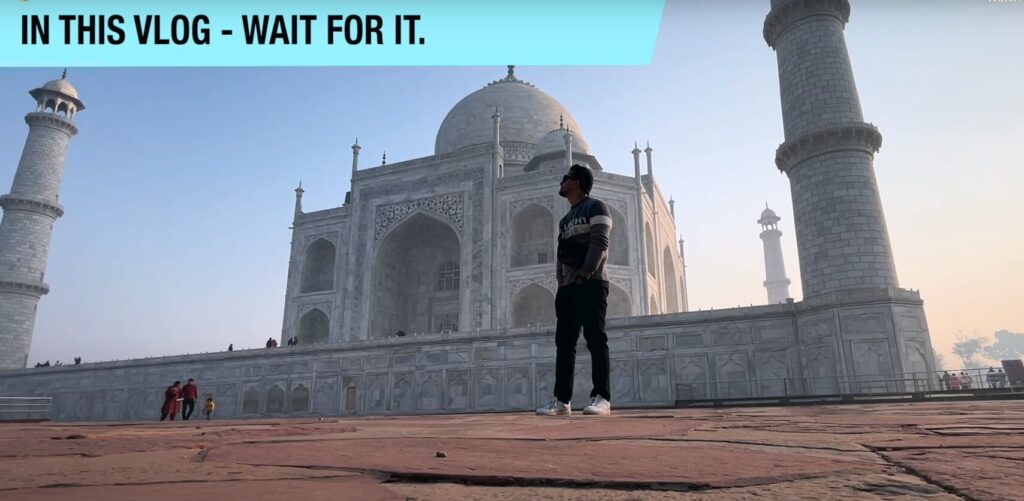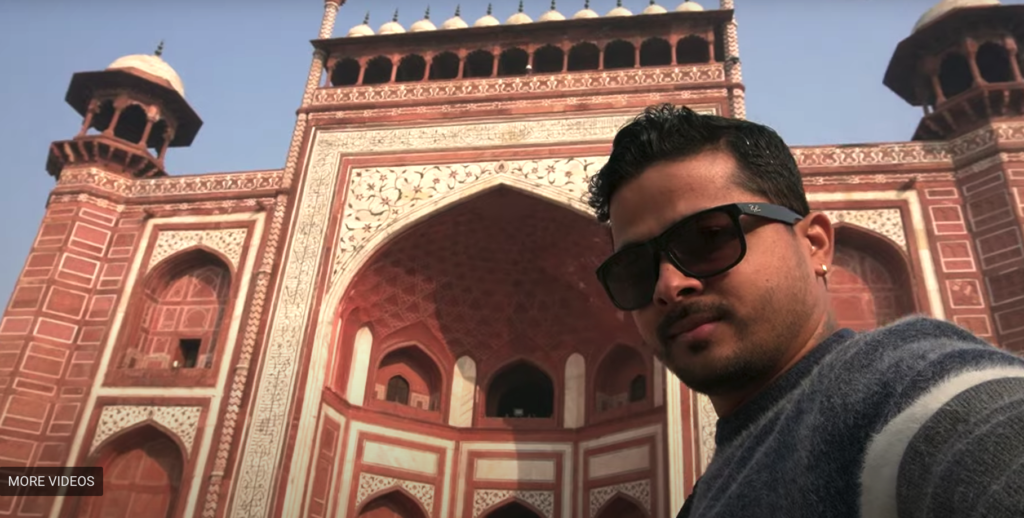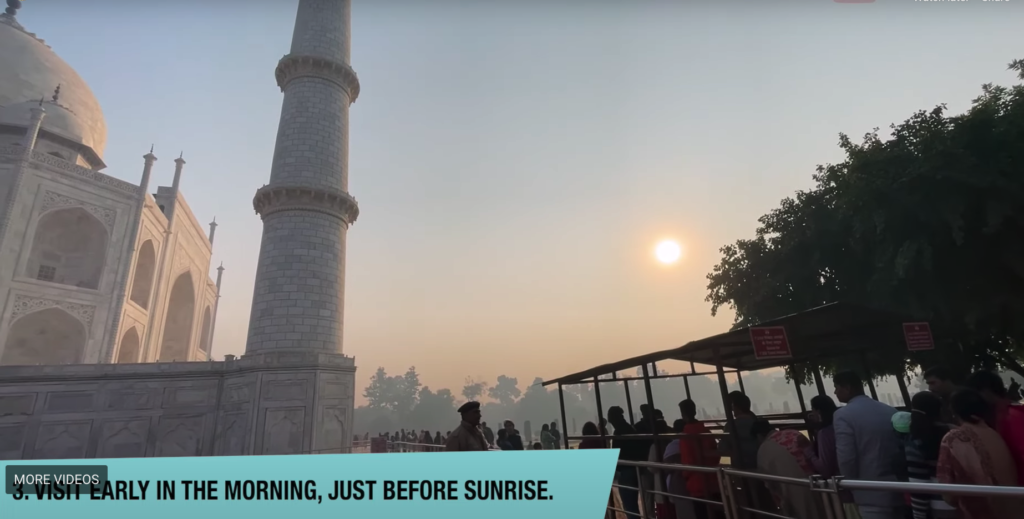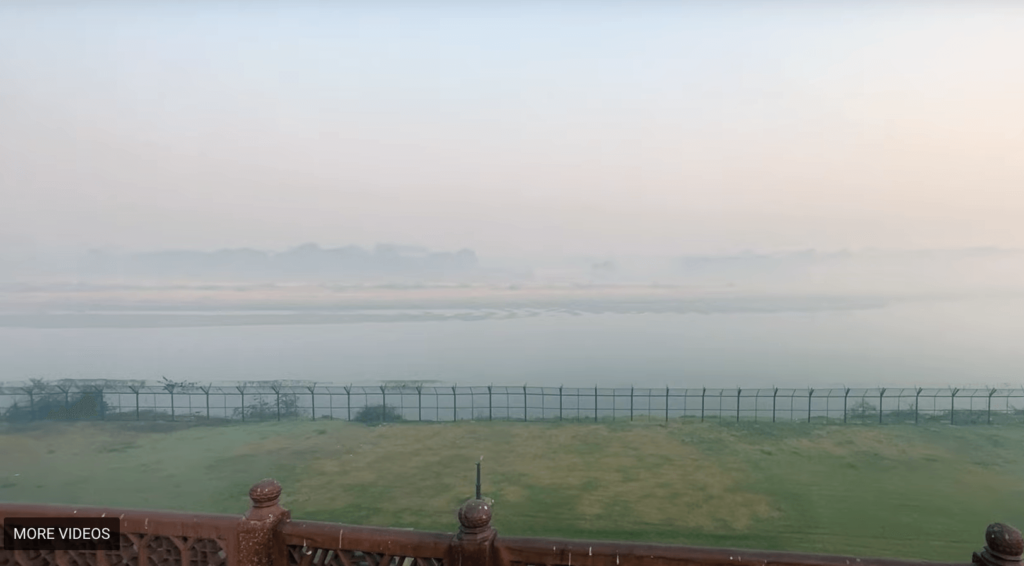The Taj Mahal in Agra, India, is one of the world’s most iconic and recognizable landmarks. This stunning masterpiece of Mughal architecture attracts millions of visitors each year and is an important symbol of India’s rich cultural heritage.
In this blog, we will explore the history, architecture, and important details of visiting the Taj Mahal in Agra, India.
Table of Contents
History of the Taj Mahal
The Taj Mahal was built by the Mughal emperor Shah Jahan in the 17th century, in memory of his beloved wife Mumtaz Mahal.
The construction of the Taj Mahal took over 20 years to complete, and it was finally finished in 1653. Since then, it has been a source of inspiration and wonders for people around the world.
The construction of the Taj Mahal began in 1632 and took over 20 years to complete, with over 20,000 workers involved in the project.
The main structure of the Taj Mahal is made of white marble, with intricate carvings and inlaid gemstones that make it a true wonder to behold.
It is estimated that the construction of the Taj Mahal cost the equivalent of over a billion US dollars in today’s currency.
Architecture and Design
The Taj Mahal is an impressive feat of architecture and design, featuring a blend of Indian, Persian, and Islamic styles. The main structure is made of white marble, with intricate carvings and inlaid gemstones that make it a true wonder to behold.
The building is surrounded by lush gardens, reflecting pools, and fountains, adding to the overall grandeur of the site.

The central dome is the most recognizable feature of the Taj Mahal, and it is surrounded by four minarets that stand over 40 meters tall.
The building is also surrounded by lush gardens, reflecting pools, and fountains, adding to the overall grandeur of the site.
Cultural Significance
The Taj Mahal is an important symbol of India’s cultural heritage and is recognized as one of the Seven Wonders of the World.
It is a testament to the Mughal era of Indian history, showcasing the wealth, power, and cultural achievements of the Mughal Empire.
The Taj Mahal is also a popular destination for visitors to India, with millions of people from around the world making the journey to see this architectural masterpiece.

Best Time to Visit the Taj Mahal
The best time to visit the Taj Mahal in Agra is during the winter months, from November to February, when the weather is pleasant and mild.
During this time, the temperatures are usually between 8°C to 20°C, making it comfortable to explore the monument and its surroundings. Additionally, the skies are usually clear, providing a beautiful backdrop for photos of the Taj Mahal.
Visiting during the winter months also means you can avoid the scorching heat of the summer months, which can be quite intense and uncomfortable, especially for those not used to the heat.
The monsoon season, from June to September, can also make visiting the Taj Mahal challenging due to heavy rainfall and potential flooding in the area.
However, it’s important to note that the Taj Mahal can get crowded during the winter months, as it is the peak tourist season.
If you prefer fewer crowds, consider visiting during the shoulder seasons of October or March, when the weather is still mild but there are fewer visitors.
Ultimately, the best time to visit the Taj Mahal will depend on your personal preferences and priorities.

Things to know before visiting the Taj Mahal
- The Taj Mahal is open to visitors every day except Friday, and it’s recommended to visit during the early morning hours to avoid the crowds and the heat.
When visiting the site, it’s important to dress modestly, and shoes must be removed before entering the main structure. Photography is allowed, but there are some restrictions on the use of tripods and other equipment. - Avoid long ticket queues and save your time by booking tickets online.
Here’s a step-by-step guide on how to book online tickets to the Taj Mahal:- Go to the official website of the Archaeological Survey of India (ASI): https://asi.payumoney.com/#/
- Click on the “Taj Mahal” tab to book tickets for the Taj Mahal.
- Choose the date and time of your visit, and select the number of visitors (maximum of six visitors per booking).
- Select the type of ticket you want to purchase (Indian or foreign) and click on “Book Now”.
- Enter your personal details, such as your name, email address, and phone number.
- Verify your details and click on “Pay Now” to proceed to the payment gateway.
- After the payment is successful, you will receive a confirmation email with your booking details and a link to download your e-ticket.
- On the day of your visit, carry a printout of your e-ticket along with your photo ID proof and enter through the designated entrance gate.
(Note: It’s recommended to book your tickets in advance, as only a limited number of visitors are allowed per day and the Taj Mahal can get very crowded, especially during peak season. Also, please make sure to carry the original photo ID proof with you, as it will be checked at the entrance.)
- Visit the Taj Mahal in the early morning before sunrise to avoid the crowd.
The opening timings of the Taj Mahal are as follows:- Sunrise to Sunset: The monument is open for visitors from sunrise to sunset, which varies depending on the season. The timings are as follows:
- November to February: 6:00 am to 6:30 pm
- March to April: 6:00 am to 7:00 pm
- May to August: 6:00 am to 7:30 pm
- September to October: 6:00 am to 6:30 pm
It’s recommended to check the exact timings before your visit, as they can change depending on the weather or other factors.
- Sunrise to Sunset: The monument is open for visitors from sunrise to sunset, which varies depending on the season. The timings are as follows:
The river Yamuna flows right behind the Taj Mahal and provides a picturesque backdrop to this magnificent monument.
The reflection of the Taj Mahal in the waters of the Yamuna River is a sight to behold, especially during sunrise and sunset.
The river also played a crucial role in the construction of the Taj Mahal, as it was used to transport building materials to the site.

Today, the Yamuna River is facing environmental challenges, and efforts are being made to clean and restore it to its former glory.
The Taj Mahal and the Yamuna River remain significant symbols of Indian history and culture, attracting millions of visitors each year.
The best ways to reach the Taj Mahal
- By Air: The closest airport to the Taj Mahal is the Agra Airport, which is about 13 kilometres away from the monument. However, flights to Agra are limited and can be expensive. The nearest major international airport is the Indira Gandhi International Airport in New Delhi, which is about 220 kilometres away. From there, visitors can take a domestic flight to Agra, or opt for a train or road trip.
- By Train: The Agra Cantonment Railway Station is the main railway station in Agra and is well-connected to major cities in India. Several express trains run between Agra and Delhi, Mumbai, Kolkata, and other major cities. The fastest and most convenient option is the Gatimaan Express, which takes just 90 minutes to reach Agra from Delhi. From the railway station, visitors can take a taxi or auto-rickshaw to the Taj Mahal.
- By Road: Agra is well-connected by road to major cities in India, including Delhi, Jaipur, and Lucknow. Visitors can choose to drive their own car or hire a taxi for the journey. The Yamuna Expressway, which connects Delhi to Agra, is a modern six-lane highway and is the fastest and most convenient way to travel by road. However, visitors should be prepared for heavy traffic and long travel times, especially during peak tourist season.
Reaching the Taj Mahal is easier than you might think, with several transportation options available to visitors. Once you reach Agra, the Taj Mahal is located in the heart of the city and is easily accessible by taxi, auto-rickshaw, or even by walking.
It’s recommended to visit the Taj Mahal during the early morning hours to avoid the crowds and the heat and to dress modestly while visiting the site.
Things to do beyond the Taj Mahal: Agra Street Food and Sadar Market
Agra is famous for the Taj Mahal, but it’s also a foodie’s paradise. The city is known for its delicious street food and bustling markets, offering a wide variety of local delicacies and traditional crafts. One of the best places to explore this side of Agra is Sadar Market.
Sadar Market is a vibrant bazaar in the heart of Agra, known for its colourful shops, street food stalls, and handicrafts. The market is a favourite among locals and tourists alike and is the perfect place to experience the flavours and culture of Agra.
When it comes to street food in Agra, you’ll find no shortage of options in Sadar Market. Here are some of the must-try dishes:
- Bedai and Jalebi: Bedai is a savoury fried bread made with a mix of lentils and spices, and is often served with a sweet jalebi.
This sweet and savoury combination is a popular breakfast item in Agra and can be found in many street food stalls in Sadar Market. - Petha: Agra is famous for its sweet and juicy Petha, which is made from ash gourd and flavoured with sugar and saffron. You can find Petha in many varieties in Sadar Market, from plain to flavoured with coconut, chocolate, and even paan.
- Chaat: Chaat is a popular snack in India, and Agra has its own unique version. Agra’s chaat is made with crispy fried bread, potatoes, chickpeas, and a tangy tamarind sauce. You can find it in many street food stalls in Sadar Market.
Apart from the street food, Sadar Market is also a great place to shop for traditional crafts and souvenirs. You’ll find shops selling everything from leather goods, textiles, jewellery and marble handicrafts. Make sure to bargain hard and you might end up with some great deals.
Sadar Market is a must-visit destination in Agra, offering a glimpse into the local culture and cuisine. With its vibrant atmosphere, delicious food, and unique shopping experiences, it’s no wonder that Sadar Market is a favourite among locals and tourists alike.
5 days itinerary for exploring Agra, India:
Day 1:
- Arrive in Agra and check into your hotel
- Visit the Taj Mahal for sunset views (the monument is open until 7:00 pm for sunset viewing, but be sure to check the exact timings beforehand as they can change depending on the season)
- Take a stroll in the nearby gardens and take in the views of the Taj Mahal from different angles
- Enjoy dinner at a local restaurant or at your hotel
Day 2:
- Wake up early and head to the Taj Mahal at sunrise (the monument is open from sunrise to sunset)
- Explore the Taj Mahal and its intricate architecture and details
- Visit the nearby Agra Fort, a UNESCO World Heritage Site that served as a royal residence for Mughal emperors
- Enjoy lunch at a local restaurant
- In the afternoon, visit the nearby Baby Taj, a smaller tomb that is often overlooked by tourists but is still an impressive site
- Visit the Mehtab Bagh gardens across the Yamuna River for a stunning view of the Taj Mahal at sunset
- Return to your hotel for dinner and rest
Day 3:
- Visit Fatehpur Sikri, a deserted city that was once the capital of the Mughal Empire
- Explore the impressive Buland Darwaza, the largest gateway in the world, and other architectural marvels such as the Jama Masjid mosque and Tomb of Salim Chishti
- Return to Agra for lunch and visit the local bazaars and markets for souvenirs and handicrafts
- In the evening, watch the Mohabbat the Taj show, a cultural program that tells the story of the Taj Mahal through dance and drama
- Enjoy dinner at a local restaurant
Day 4:
- Visit the Itmad-ud-Daula, a tomb often called the “Baby Taj” due to its similar design and intricate inlay work
- Explore the Chini Ka Rauza, a tomb that showcases a unique architectural style with intricate blue ceramic tiles
- Take a leisurely walk along the Yamuna River and enjoy views of the Taj Mahal from a different perspective
- Return to your hotel for dinner and rest
Day 5:
- Depending on your schedule, you may have time to visit other nearby attractions such as the Keetham Lake or the Akbar’s Tomb
- Depart from Agra at the end of the day
You can adjust it according to your interests and schedule. It’s recommended to plan your trip in advance and to book your tickets to the Taj Mahal and other sites online to avoid long lines and waiting times.
The Taj Mahal is an important cultural and historical landmark in India, and a must-see destination for anyone visiting the country.
Its breathtaking beauty and rich history make it a unique and memorable experience, and it’s no wonder that it is considered one of the Seven Wonders of the World. If you’re planning a trip to Agra, India, be sure to put the Taj Mahal on your list of must-see destinations.
Check out our Vlogs and if you like the videos consider subscribing. Happy travelling 🙂
Consider watching some other series:

